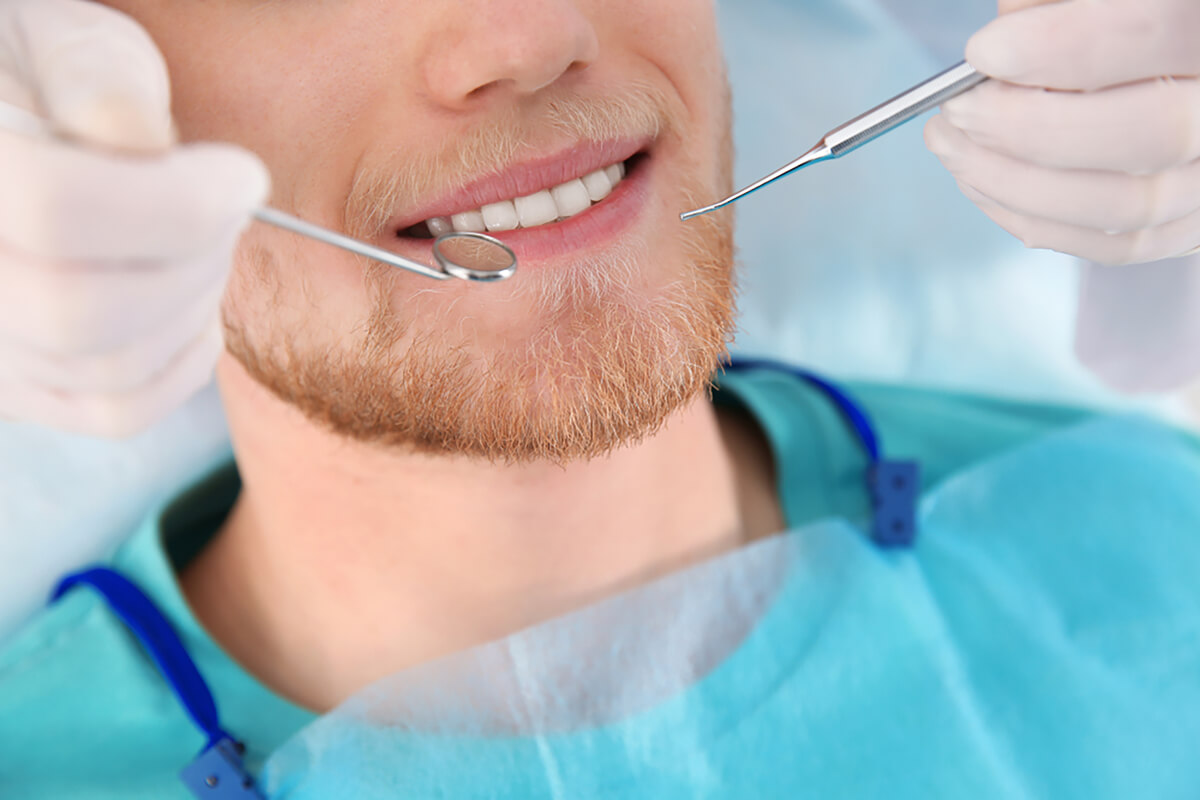It affects roughly half of all adults. It’s the leading cause of tooth loss in adults. It’s one of the most common reasons people visit the dentist. Do you know what it is? The answer is — gum disease. But what is gum disease, exactly?
What is gum disease?
Gum disease is an infection of your gum tissues. Your gums are easily overlooked, but they have an essential role in supporting your teeth but also sealing away the interior of your jaw while protecting your tooth’s roots from exposure and bacteria. Gum disease — also called periodontal disease — is an infection of the gums that is most commonly attributable to poor oral hygiene habits that have allowed plaque — a sticky biofilm — to accumulate and even harden into tartar. Periodontal disease presents in two primary ways: as the less serious but very common gingivitis; and as the more serious periodontitis.
The two stages of periodontal disease
Gingivitis is the earliest form of gum disease and presents as inflammation of the gums. That inflammation is caused by the accumulation of plaque on the surfaces of your teeth and along your gum line. When detected early, gingivitis is easily treated and corrected before it progresses. Professional dental cleanings and a renewed commitment to daily oral hygiene habits — brushing, flossing, and mouthwash — are generally sufficient to resolve gingivitis and prevent the emergence of more serious periodontitis.
Periodontitis is an advanced form of gum disease that does not restrict its damage to the gums. Periodontitis affects the gums and the bone material that supports teeth. At its worst, periodontitis is so destructive of gum and bone material that teeth lose their essential support — causing them to become loose and even to fall out. Periodontitis is preventable with a commitment to good oral hygiene, but a renewed commitment to oral hygiene is not enough to arrest periodontitis once it has become established. Treating periodontitis requires more invasive procedures such as scaling and even deep cleaning of the roots of the affected teeth.
Symptoms of gum disease
Gums that bleed while brushing or flossing can indicate the presence of periodontal disease. That bleeding occurs because bacteria have accumulated below beneath the gums, and those gums become irritated when you brush your teeth or gums. Bleeding gums attributable to periodontal disease are often accompanied by inflammation that makes your gums appear red and swollen.
If your teeth seem to be getting longer, it may be because your gums are receding or shrinking away and down towards the roots. Those receding gums — sometimes referred to as gum recession — indicate the presence of progressive gum disease. As that gum disease progresses further, the gums tend to recede further and to the point that they can no longer be reached and cleaned properly by flossing. That inability to keep the gums clean accelerates the progress of the disease and causes deeper gum recession that can eventually expose the teeth’s roots.
Occasional and intermittent sensitive teeth are a common phenomenon even in a relatively healthy mouth. In a mouth affected by advancing periodontal disease, thought, that teeth sensitivity indicates that gums may have receded to the point that they are not capable of protecting and shielding the roots of your teeth. In addition to sensitivity, that leaves the roots vulnerable to decay and, with that, the risk of tooth loss. At this stage of periodontal disease, persistent bad breath is also common. That persistent halitosis is produced by the bacteria that has accumulated in your mouth, and around and beneath your receding gums.
As serious as periodontal disease is, it is as preventable and treatable although treatment options are more comfortable and less invasive when gum disease is detected early rather than after it has progressed. Regular dental checkups are an essential part of a strategy to prevent the emergence and progress of periodontal disease. If you are experiencing the symptoms of gingivitis or periodontitis or do not have a regular general dentist, contact a dentist in Millwoods to learn about the best options for prevention and treatment.

